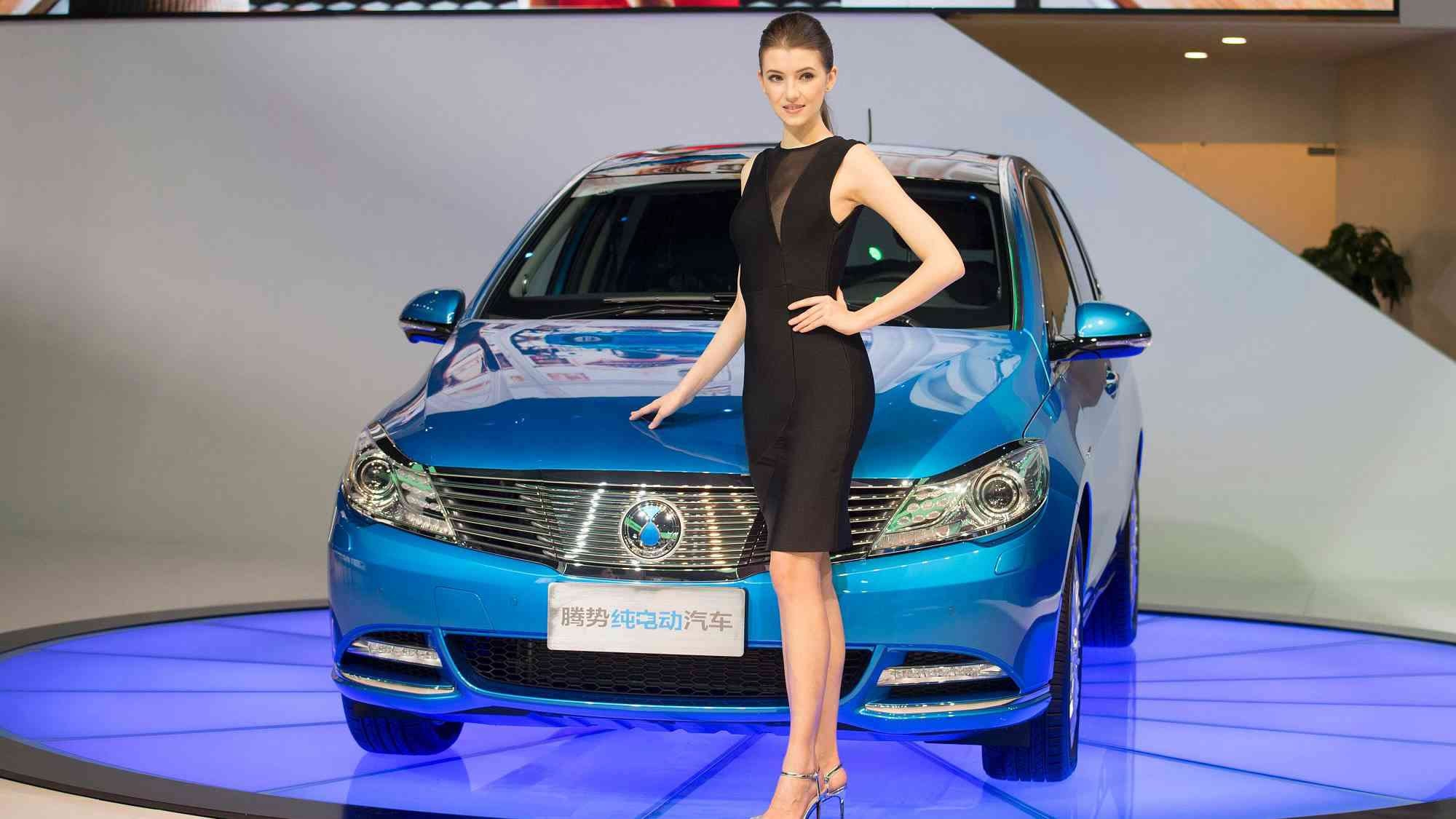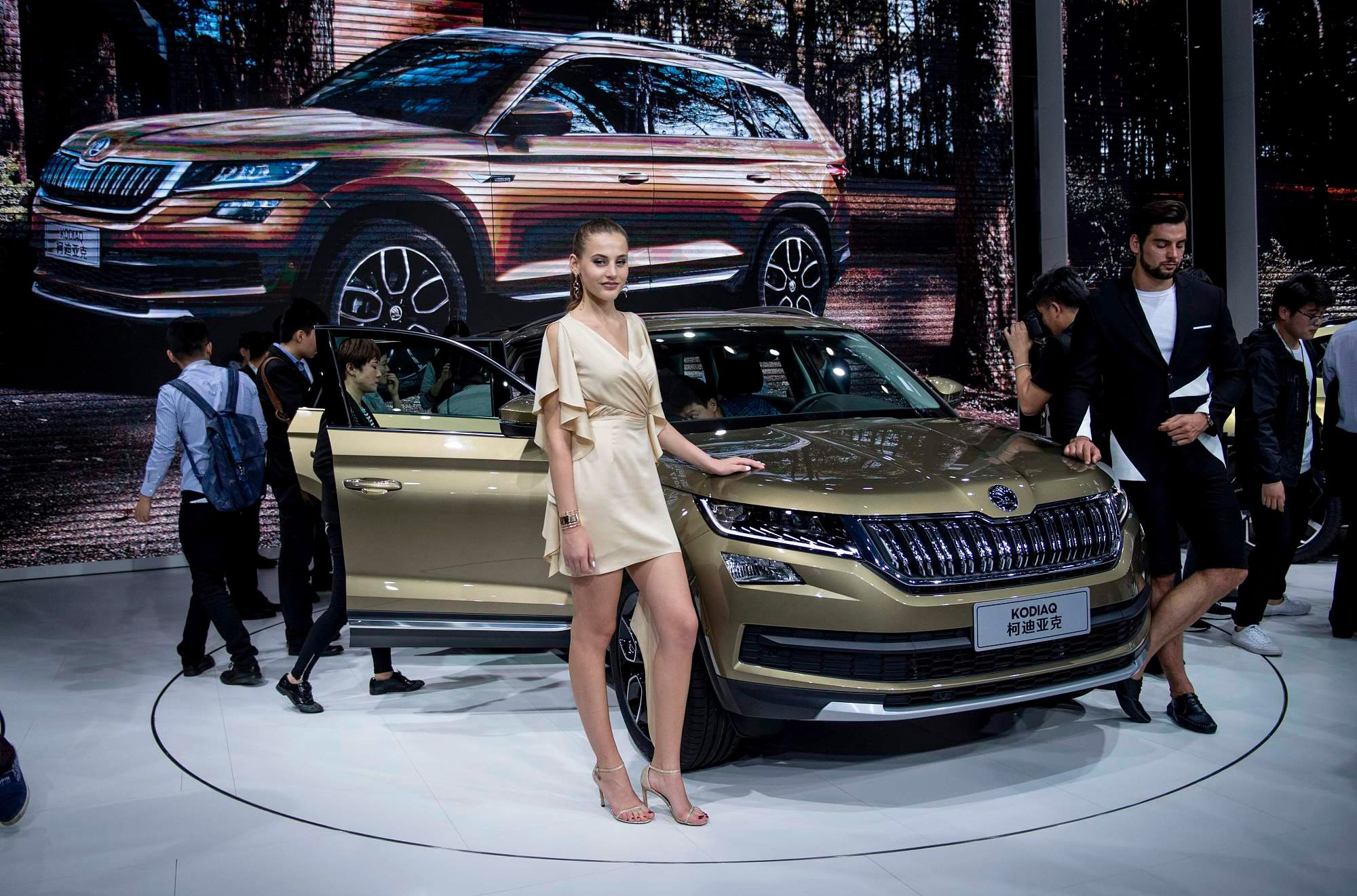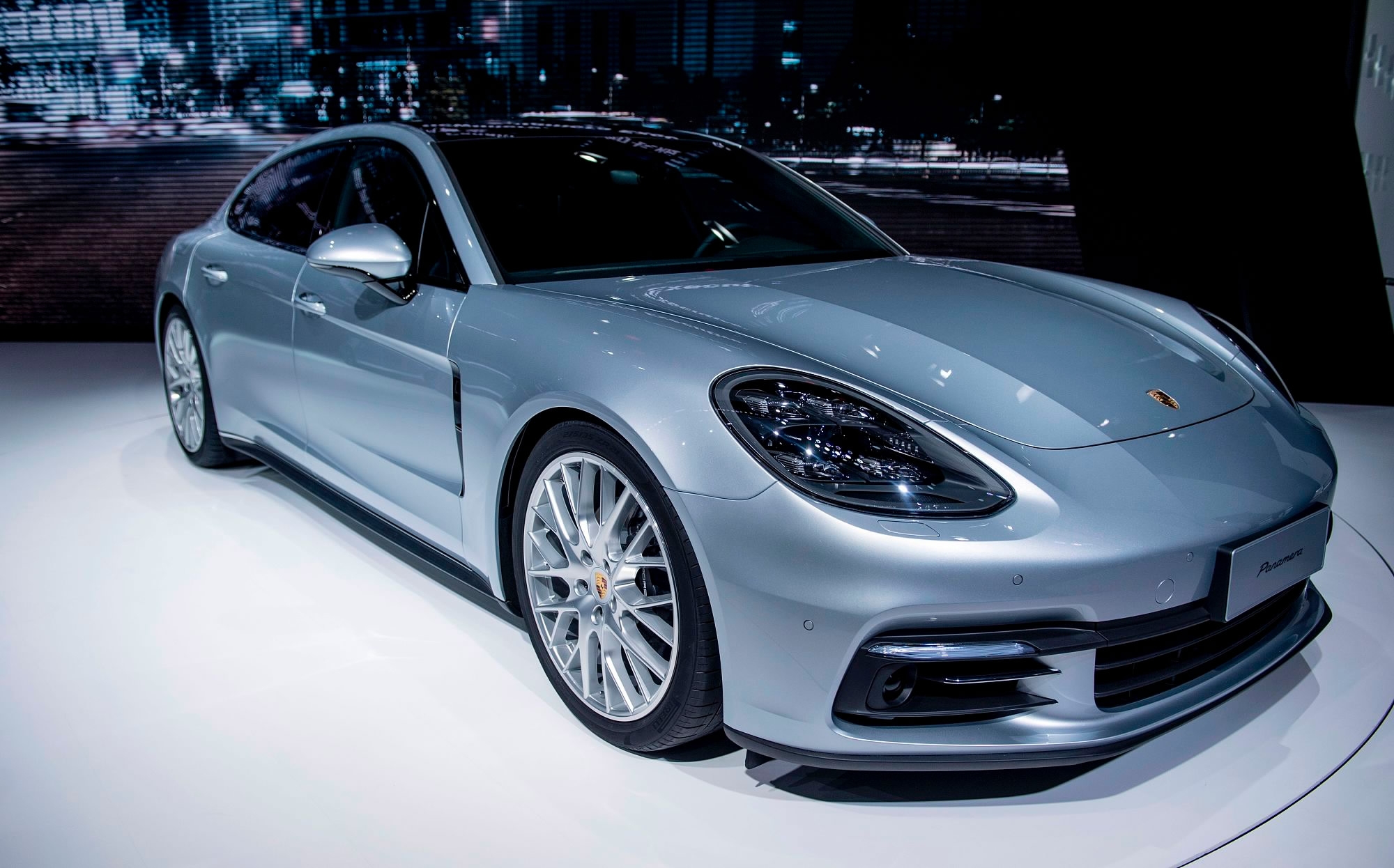Opinion: Expensive cars and inequality at China’s largest car show
2017-04-19 16:07 GMT+8
1074km to Beijing

Editor
Li Kun
Guest commentary by Jon Taylor
Today, the annual Shanghai International Automobile Industry Exhibition officially kicks off. While the much of the global headlines covering the event will focus on the latest models and the ‘flashiest’ cars, the car show actually reveals something far more interesting about Chinese society in general.
First of all why is the Shanghai exhibition important? Because in 2010, China surpassed the US and all other countries in new car sales. China is now the biggest automotive market in the world, with the country selling and making more cars than anywhere else in the world. That likely will come as a shock to the average US citizen.

Models pose with a Skoda Kodiaq during the media day of the 17th Shanghai International Automobile Industry Exhibition in Shanghai on April 19, 2017. / CFP Photo
In fact, the average American might ask the following: given that China is still a developing nation with real concerns about inequality, why is China holding a massive auto show and who can actually afford these cars? They may also ask if car ownership is only for the wealthy or the relatively wealthy. What they definitely will not ask about is how car ownership is an embodiment of China’s long-term goal to create an all-around “moderately prosperous” society by 2020. If there is one area where the Chinese Dream and the American Dream coincide, it is in car ownership. Car ownership means mobility. It means freedom of movement. It means the ability to commute to and from one’s job. It offers the opportunity to tour the country or visit family and friends. Owning a car, like owning a house, is the mark of arrival into middle class status and the fulfillment of the average middle class person’s aspirations.
China has seen remarkable growth since its Reform and Opening-up period over three decades ago. Unfortunately, the gains experienced as a result of this growth have not been evenly shared and are the source of great concern in some parts of China's central government. China has almost wiped out urban poverty and is now tackling the remaining inequality in rural areas. This concern has been concretely expressed in both the 13th Five-Year Plan and the National New-Type Urbanization Plan.

The new Porsche Panamera Executive is displayed during the media day of the 17th Shanghai International Automobile Industry Exhibition in Shanghai on April 19, 2017. / CFP Photo
China has gone through both rapid urbanization and motorization during the Reform Era. The current urbanization rate now stands at approximately 54%, which is a dramatic increase from 18% in 1978. Car ownership has also increased significantly, with 31 cars for every 100 households in China in 2016, up from less than one-tenth of one percent for every 100 households in 1978. Population growth, urbanization, and economic development have long been identified as factors influencing car ownership in both China and the US and it should be noted that China’s current rate of vehicle ownership is higher than that of comparable countries when they were in the same stage of economic development.
With this in mind, it begs the question: What can the Shanghai International Automobile Industry Exhibition offer to those Chinese who do not dwell in the large cities or who may not yet be middle class? The answer: affordable domestically produced vehicles and used cars.
While both domestic and foreign automakers have usually focused on new car sales in China, there has been recent interest in developing China’s second-hand car market, as well as aftermarket services, and repair businesses. The domestic used car market is relatively new in China but is expanding dramatically. Driven by huge growth in new car sales as well as sustainable growth driven by rising household income, and China’s policies to increase urbanization, the used car market is well positioned to selling to those Chinese who have yet to achieve middle class status – especially for older affordable vehicles. If working class and poor Chinese are to personally achieve China’s goal of an all-around moderately prosperous society by 2020, one of the tangible results will be an increase in used car sales.
(Dr. Jon R. Taylor is a professor of political science at the University of St. Thomas in Houston. The article reflects the author’s opinion, not necessarily the view of CGTN.)
1074km
Copyright © 2017
